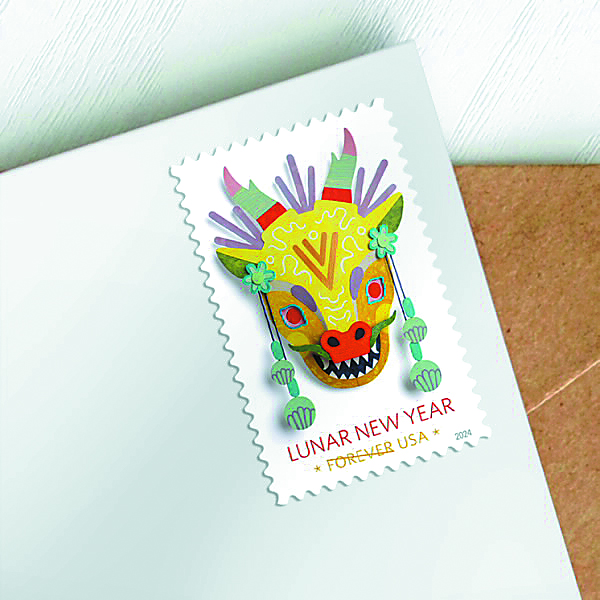“For more than three decades, the Postal Service has issued stamps highlighting the Lunar New Year, and this subject has been some of the most successful stamp releases in the long history of the Postal Service,” said Eduardo H. Ruiz, Jr., USPS vice president of retail and delivery operations for the Postal Service’s WESTPAC Area, who served as the dedicating official.
Lunar New Year Stamp Background
On February 10, 2024, millions of people around the world will celebrate the Lunar New Year holiday. Beginning on the night of the second new moon following the winter solstice, the Lunar New Year festival celebrates the coming of spring and a time of renewal. It also marks the beginning of the Year of the Dragon, the fifth of the 12 animals associated with the Chinese zodiac. The Year of the Dragon ends on January 28, 2025.
Parades, parties, and other special events mark the Lunar New Year festival for people of Chinese, Korean, Vietnamese, and Mongolian heritage in many parts of the world. Celebrants set off firecrackers to ward off evil spirits and clean their houses to signify a moment of renewal before spring. They write couplets and give gifts to celebrate the coming year. Festive lanterns, colored red and gold for luck, are hung as decorations, and celebrants prepare customary foods to honor the traditional planting season.
People born in the Year of the Dragon are supposedly successful, wise, and powerful, making them the most auspicious sign in the Chinese zodiac. Many consider the dragon to be so favorable, that they plan for children to be born under the sign. Every 12 years, many Asian communities experience a baby boom because of the allure of the dragon, the only mythical creature in the zodiac.
Five elements—wood, fire, earth, metal, and water—are also associated with each year’s animal sign. In 2024, the Lunar New Year will mark the beginning of the Year of the Wood Dragon. Characteristics of the Wood Dragon differ from those of other elemental dragons—they are said to be quieter and more introverted, but also successful, strong leaders who dedicate themselves fully to their work.
Beginning in 2020, in observance of the Lunar New Year holiday, the U.S. Postal Service introduced its third Lunar New Year series. This is the fifth Forever stamp in that series, which will continue through 2031 with stamps for the Year of the Snake, Horse, Ram, Monkey, Rooster, Dog, and Boar.
The Stamp Design
Artist Camille Chew constructed the dragon mask from hand-printed paper, then cut, scored, and folded it into shape. She embellished the mask with acrylic paint and other paper elements, like flowers and tassels, and covered the back of the mask in a layer of papier-mâché. The completed mask was photographed on a white background.
Utilizing gold and red as the predominant colors, the dragon mask incorporates elements with symbolic meaning. Gold signifies prosperity in the coming year, while red is considered lucky—colors befitting the dragon sign, which is said to be the most auspicious among all the animals in the Chinese zodiac.
With guidance from art director Antonio Alcalá, Chew worked on this series of stamps to create contemporary Lunar New Year imagery. Referencing the colorful and beautifully adorned masks used in Lunar New Year parades, Chew’s three-dimensional art evokes feelings of celebration and festivity. Illustrations of the 12 zodiac animals, done in the artist’s unique style, form vertical lines on the left and right sides of the pane of 20 stamps.
The Lunar New Year: Year of the Dragon pane of 20 stamps are issued as Forever stamp.
According to koreaherald.com. Source of photos: internet







![[HONORARY PROFESSOR OF RECORD FOR PRACTICE AND EMPIRICAL RESULTS – 2024] RECORD HOLDER CHU BAO QUE (BAC GIANG PROVINCE, VIETNAM)](https://uskings.us/wp-content/uploads/2024/05/IMG_0386-218x150.jpg)
